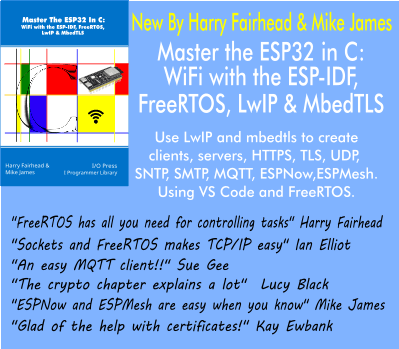| Experience the PDP-11/70 With Raspberry Pi |
| Written by Harry Fairhead | |||
| Saturday, 01 June 2019 | |||
|
The PDP-11 is widely considered the most popular minicompter. If you missed out on this phenomenon - or if you were there in the 1970s thru 1990s and are nostalgic for blinkenlights - you can buy a kit to build a replica powered with a Raspberry Pi. The kit comes from Oscar Vermeulen of Obsolescence Guaranteed who back in 2015 created a replica of the 1968 PiDP-8/1, see PiDP - A Pi Based PDP-8/I. He had set out just to build one for himself but due to the fact that the panel manufacturer offered him 50 units of the front panel for the same price as a one-off he started to sell kits and to date has shipped over 2,000. The proceeds of selling PDP-8/1 kits enabled Vermeulen to move on to an even more ambitious project - a 6:10 scale replica of the PDP-11/70 as: a professionally made, no-compromise PiDP-11. Injection molded case, exact replica switches and whatnot. The story of the PDP range of machines is told by I Programmer in Gordon Bell And DEC - The Mini Computer Era. Looking back from today you may ask what PDP stood for. To answer the question about what the acronym stands for and why it was used, here's a quote from the article: DEC's aim in life was to build smaller more affordable computers and this is exactly what they did with the PDP-1 - one of the first commercial machines to use transistors. So daring was this approach to computing that DEC didn't want to risk ridicule by calling their new machine a computer - instead they called it a Program Data Processor, hence PDP. As Vermeulen tells us: Introduced in 1975, the 11/70 was top of the line in the famed PDP-11 range, and the very last system with a proper front panel. Tragically, DEC field service often removed the front panel in a later upgrade, leaving us staring at dull blank panels ever since.. His replica is at a scale of 6:10 and he says: You could look at this as a smallish PDP-11/70, built with modern parts. Or alternatively, and equally valid, as a fancy front panel case for a Raspberry Pi. As with the PiDP-8, the PiDP-11 runs the the SimH emulator which means that the Pi handles input and output from the panel. This third party video, produced in association with TNMOC, not only introduces the kit but also shows us several computers in the PDP range and two other important computers from the same era - the Apple II and the Commodore Pet. It is Part 1 of 4 videos to help you build the kit and covers shopping for what you'll need and other preparations. For this project, Vermeulen has gone one step further and added a prototyping area to the circuit board, with the hope that people will add hardware projects onto it. The example he gives is of the ubiquitous temperature/barometer sensor but he suggests any I2C devices can be connected in a similar fashion. That hopefully gives a lot of hands-on motivation to dig in to this most venerable of computer architectures, and opens up the mad prospect of a PDP-11 controlled home automation system to name but one idea. The PDP-11 had one of the nicest assembly languages ever. It was regular and orthogonal - i.e. you could use any general purpose register for anything and all addressing modes were usable on all instructions where this made sense. The 6800 instruction set was similar to the PDP-11. It is such a shame that the Intel 8080 designers obviously never programmed a PDP-11 as is proved by the terrible x86 assembler. Come to think of it, the ARM people must have been influenced by the 6502, which was a corruption and disfiguring of the 6800 instruction set. But then, who programs in assembler these days? Is my next book really going to be PDP-11 IoT in C?
More InformationPiDP-11: Recreating the PDP-11/70 Related ArticlesGordon Bell And DEC - The Mini Computer Era Birth of the Intel 4004 - the First Microprocessor Simulating the Turing-Welchman Bombe With A Pi Raspberry Pi and the IoT in C - I2C Temperature Measurement Magnetic Core Memory For Arduino To be informed about new articles on I Programmer, sign up for our weekly newsletter, subscribe to the RSS feed and follow us on Twitter, Facebook or Linkedin.
Comments
or email your comment to: comments@i-programmer.info |
|||
| Last Updated ( Saturday, 01 June 2019 ) |



